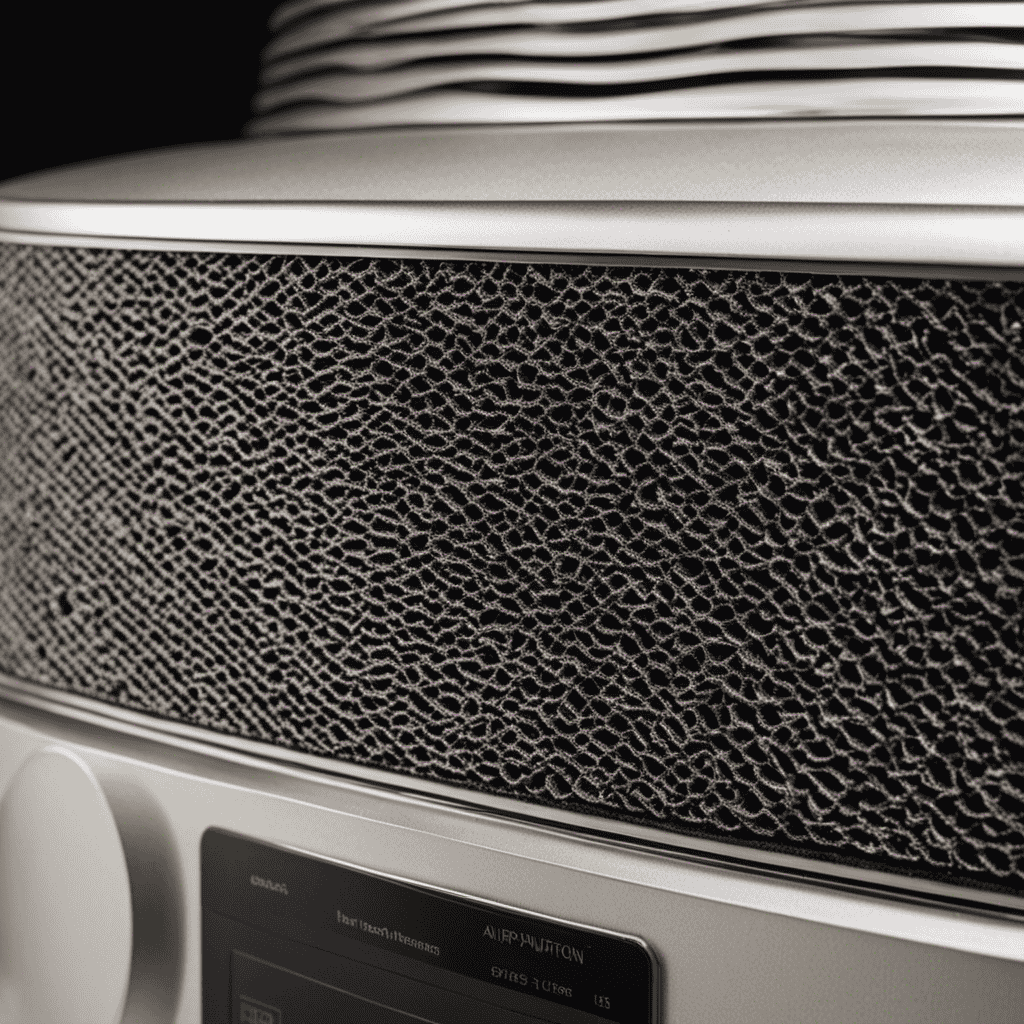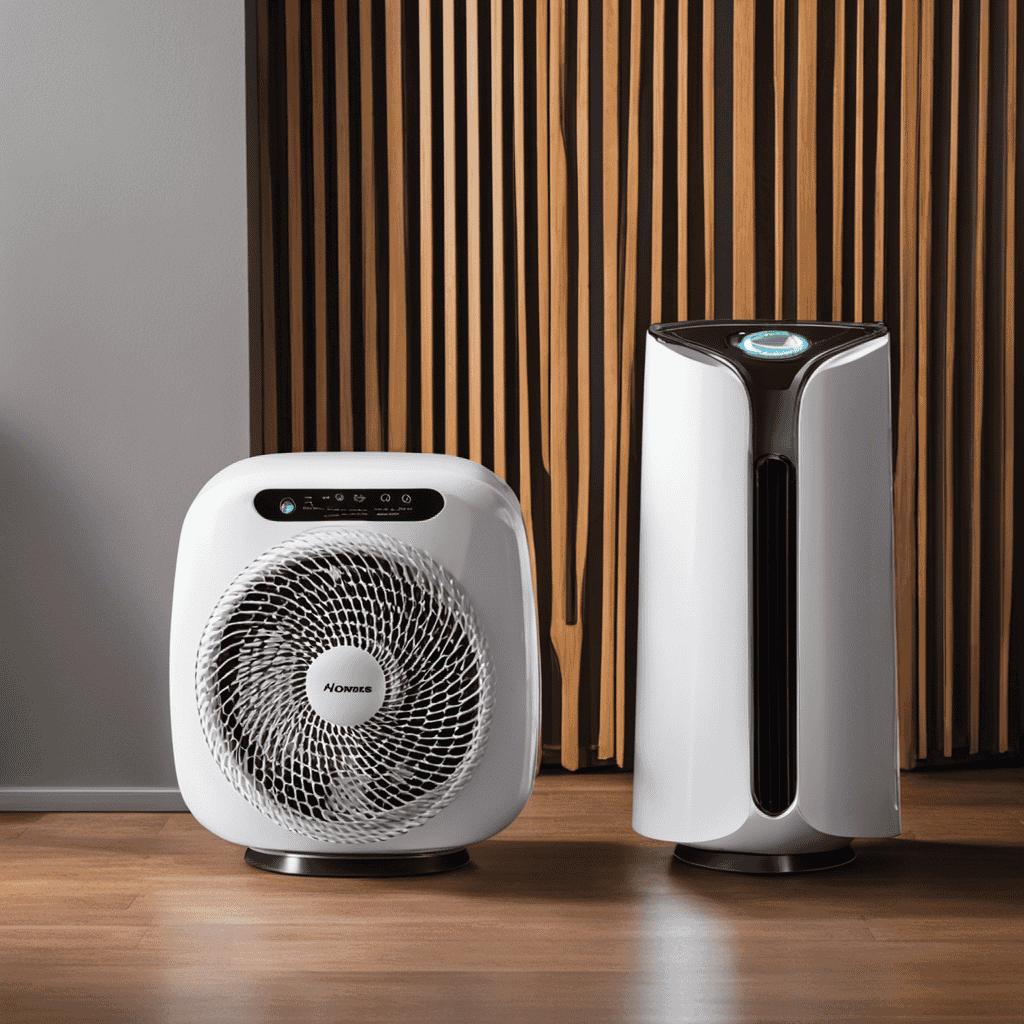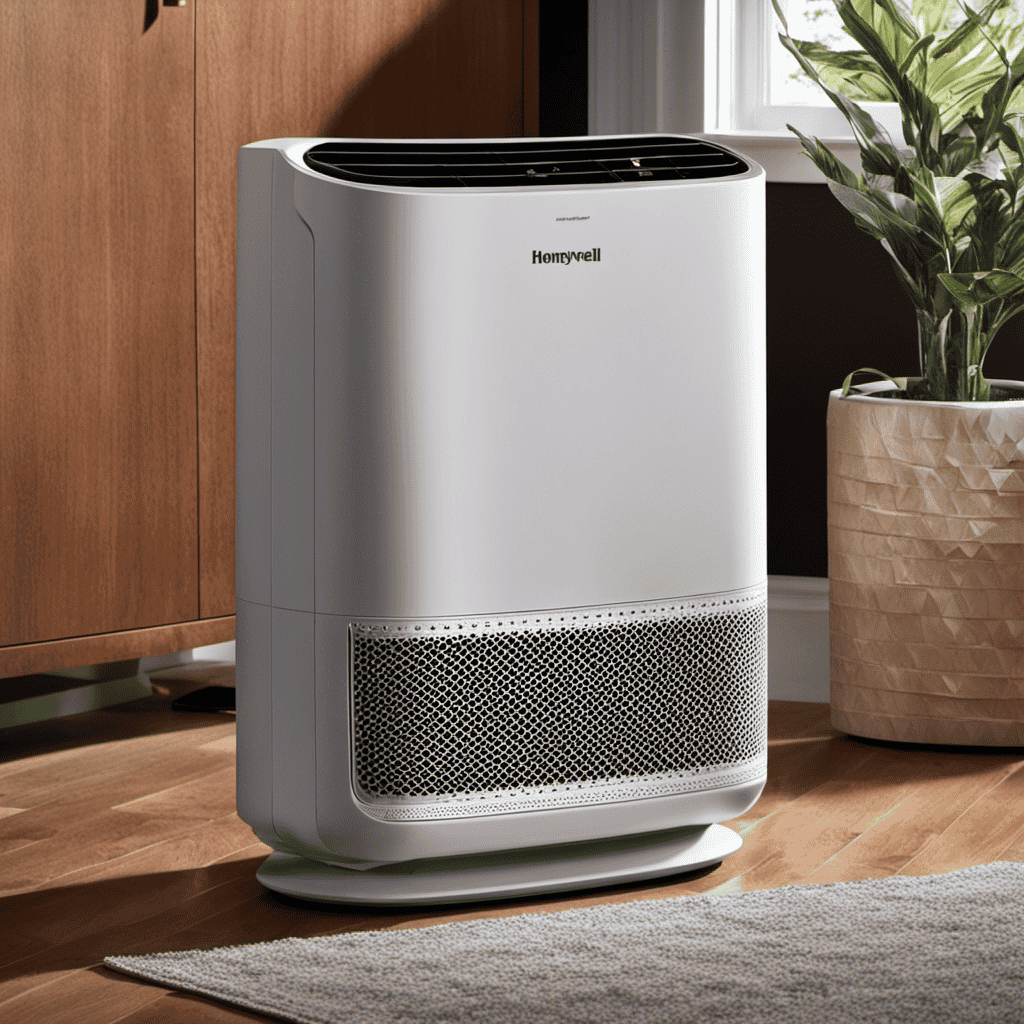As a Hamilton Beach Air Purifier owner, I understand the significance of maintaining a clean filter for top-notch performance. Just as we require fresh air to flourish, our air purifiers also need consistent upkeep to eliminate dirt, dust, and allergens from our indoor surroundings.
In this article, I will guide you through the factors that determine cleaning frequency, signs that indicate it’s time to clean your filter, and provide you with a step-by-step guide on how to effectively clean your Hamilton Beach Air Purifier Filter.
Let’s ensure every breath we take is clean and pure.
Key Takeaways
- Cleaning the Hamilton Beach Air Purifier filter is important for optimal performance and to ensure clean air in your home.
- Signs that the filter needs cleaning include a reduction in airflow or weaker fan speed, and dirt or dust particles escaping from the purifier.
- The recommended cleaning method for the filter involves using a brush or vacuum cleaner to remove debris and dust, washing the filter in warm water with mild detergent, and letting it dry completely.
- To extend the lifespan of the filter, it is recommended to clean it at least once every month, follow the proper cleaning method recommended by the manufacturer, and replace the filter according to the manufacturer’s recommendations.
Factors That Determine Cleaning Frequency
The factors that determine how often I clean the Hamilton Beach air purifier filter vary depending on usage and air quality.
There are several factors that can affect the performance of the filter and determine when it needs to be cleaned.
Firstly, the amount of time the air purifier is used plays a significant role. If I use it for longer hours each day, the filter may get clogged faster and require more frequent cleaning.
Secondly, the air quality in my surroundings is crucial. If I live in an area with high pollution levels or have pets that shed a lot of hair and dander, the filter may need to be cleaned more often.
Regular cleaning of the filter not only ensures optimal performance but also helps in removing airborne particles, allergens, and odors more effectively.
Signs That Your Hamilton Beach Air Purifier Filter Needs Cleaning
When your Hamilton Beach air purifier filter starts to show signs of needing cleaning, it’s time to take action. Regular maintenance is crucial to ensure optimal performance and clean air in your home.
There are a few warning signs that indicate your filter needs cleaning. First, if you notice a reduction in airflow or weaker fan speed, it may be due to a clogged filter. Additionally, if you start to see dirt or dust particles escaping from the purifier, it’s a clear indication that the filter is no longer effectively trapping contaminants.
It’s important to follow the manufacturer’s recommended replacement schedule to prevent these issues. In the next section, I will provide a step-by-step guide to cleaning the Hamilton Beach air purifier filter, so you can restore its efficiency and keep your indoor air clean.
Step-by-Step Guide to Cleaning the Hamilton Beach Air Purifier Filter
To properly clean your filter, start by turning off the power to your Hamilton Beach air purifier. Cleaning the filter regularly is essential to maintain its performance and prolong its lifespan. Here is a step-by-step guide to help you clean your Hamilton Beach air purifier filter effectively:
- Remove the filter from the air purifier.
- Use a brush or vacuum cleaner to remove any visible debris and dust from the filter.
- Fill a basin with warm water and add a small amount of mild detergent.
- Gently wash the filter in the soapy water, ensuring all sides are thoroughly cleaned.
- Rinse the filter with clean water to remove any soap residue.
- Allow the filter to dry completely before placing it back into the air purifier.
Factors affecting cleaning frequency include the air quality in your environment, the presence of pets, and the level of usage. Common mistakes in cleaning the filter include using harsh chemicals, not allowing the filter to dry completely, and not cleaning it regularly.
Recommended Cleaning Products for the Hamilton Beach Air Purifier Filter
For best results, I always consider using mild detergent and warm water to clean my Hamilton Beach air purifier filter.
It is important to use the right cleaning products to ensure the filter is effectively cleaned without causing any damage. Mild detergent helps to remove dirt, dust, and other particles that may have accumulated on the filter. Warm water aids in loosening the debris for easier cleaning.
When cleaning, it is crucial to avoid using harsh chemicals or abrasive materials as they can damage the filter and reduce its efficiency. Additionally, it is essential to follow the manufacturer’s instructions for cleaning and maintenance.
Common mistakes to avoid include using excessive force while cleaning, not rinsing the filter thoroughly, and neglecting regular cleaning.
Maintenance Tips for Extending the Lifespan of Your Hamilton Beach Air Purifier Filter
Regularly replacing the filter can help extend the lifespan of your Hamilton Beach air purifier. Here are some tips for proper maintenance of your Hamilton Beach air purifier filter:
-
Clean the filter regularly: Make sure to clean the filter at least once every month. This will help remove any dirt, dust, and allergens that may have accumulated on the surface.
-
Use the proper cleaning method: Follow the manufacturer’s instructions for cleaning the filter. Using the wrong method can damage the filter and reduce its effectiveness.
-
Avoid common mistakes: When cleaning the filter, avoid using harsh chemicals or excessive force. This can cause the filter to deteriorate or become less efficient.
-
Replace the filter when necessary: Even with regular cleaning, the filter will eventually become worn out and less effective. It is important to replace the filter according to the manufacturer’s recommendations to maintain the air purifier’s performance.
Following these tips will ensure that your Hamilton Beach air purifier filter stays in optimal condition, prolonging its lifespan and keeping the air in your home clean and fresh.
Conclusion
In conclusion, keeping the Hamilton Beach Air Purifier Filter clean is crucial for maintaining its efficiency and prolonging its lifespan.
By following the step-by-step guide and using the recommended cleaning products, you can ensure that your air purifier is working at its best.
Regular cleaning, based on factors such as air quality and usage, will help you breathe in cleaner and fresher air.
Remember, a clean filter is like a breath of fresh air for your home.
So, take care of your Hamilton Beach Air Purifier Filter and let it do its magic!










